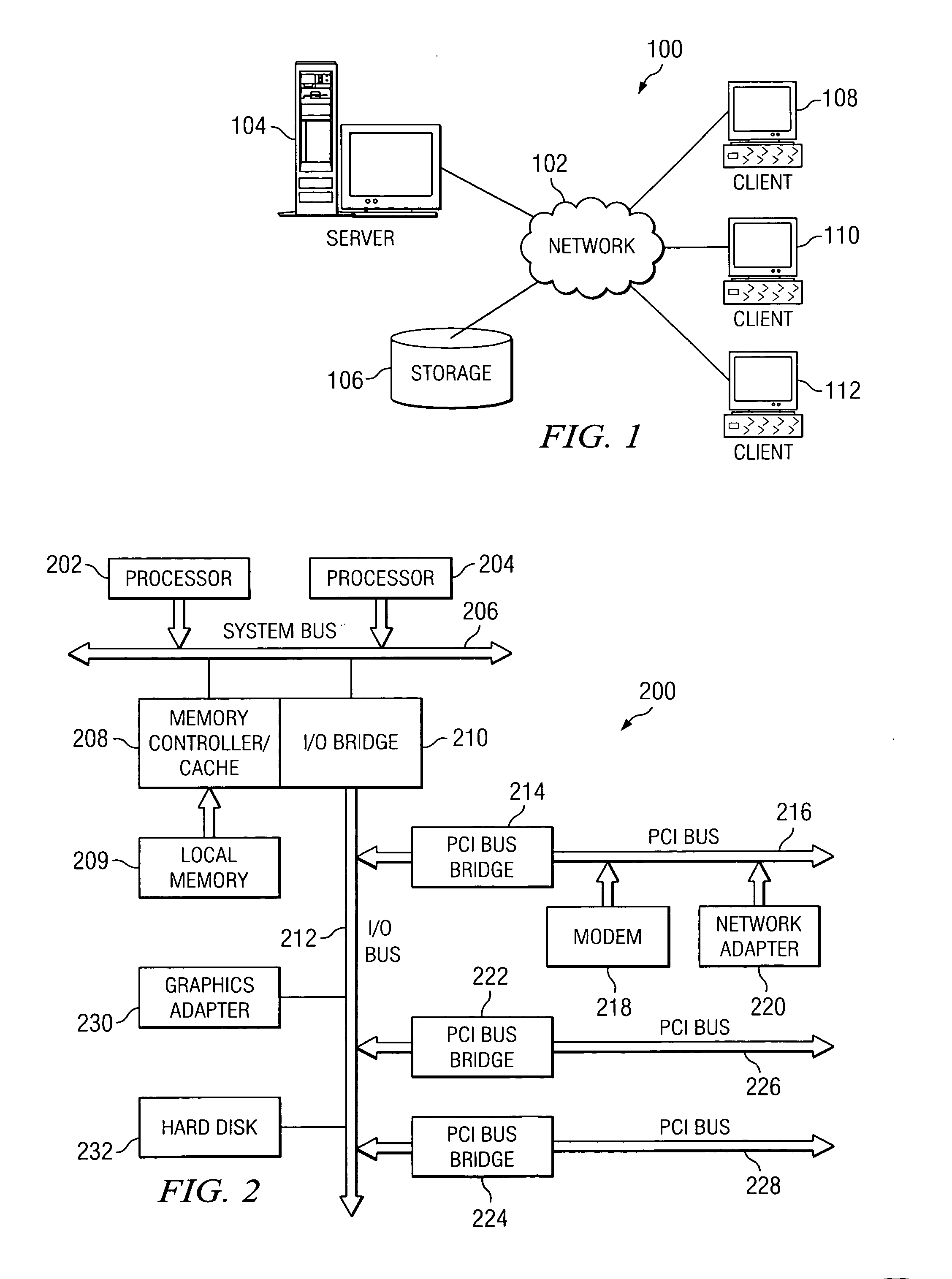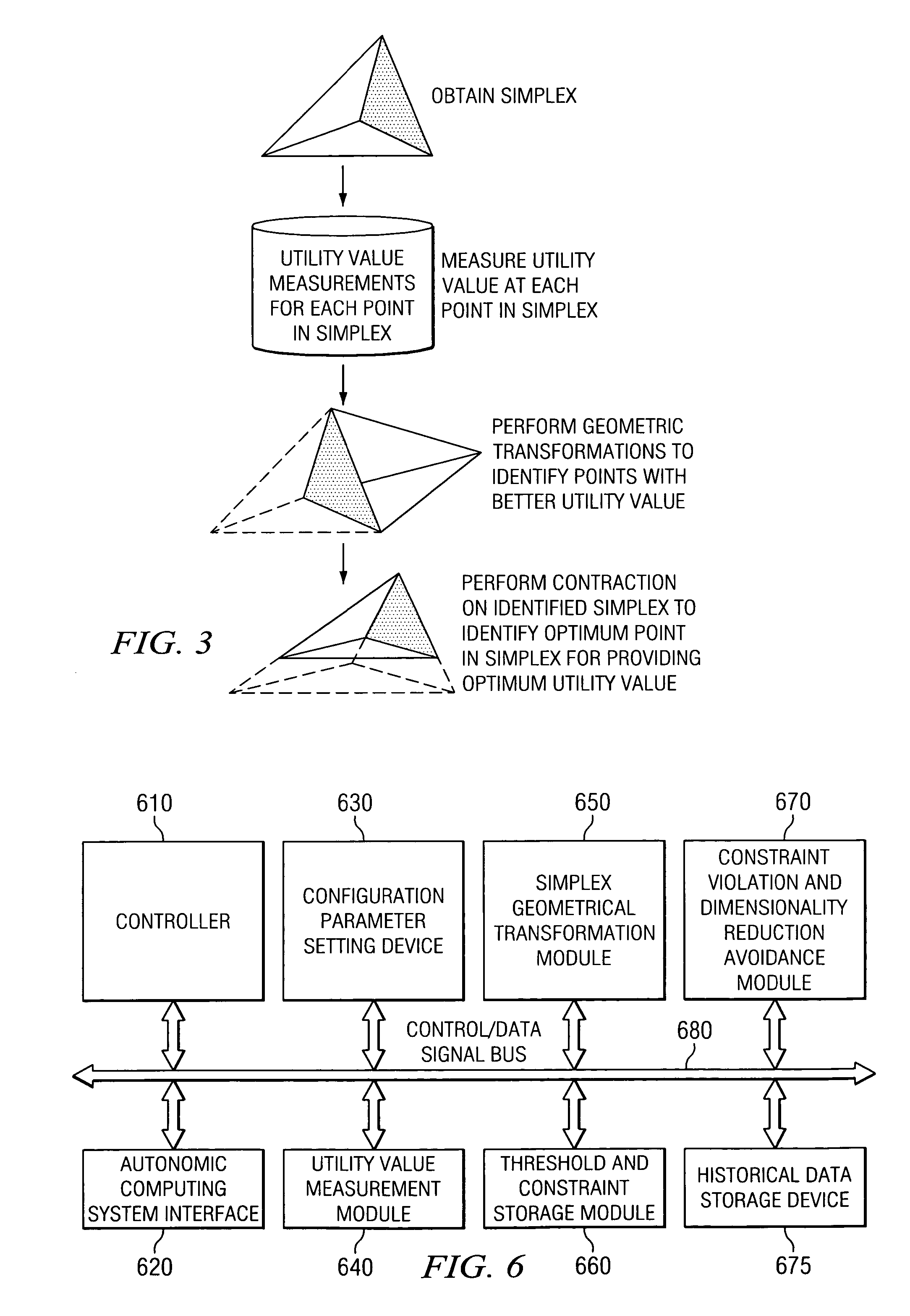Dynamic online multi-parameter optimization system and method for autonomic computing systems
a multi-parameter optimization and dynamic technology, applied in computing, error detection/correction, instruments, etc., can solve the problems of inability to obtain a good system model and the way the system interacts with the world, the complexity of the computing system necessary to provide these services and the complexity of the computing system is rapidly outstripping human ability for system operation. achieve the effect of improving system performan
- Summary
- Abstract
- Description
- Claims
- Application Information
AI Technical Summary
Benefits of technology
Problems solved by technology
Method used
Image
Examples
Embodiment Construction
The present invention provides a mechanism for determining optimum configuration parameters for autonomic computing systems, on-demand eBusiness and eCommerce systems, and the like. As such, the present invention is especially well suited for determining configuration parameters of server computing systems in distributed data processing environments. Therefore, in order to provide a context for the description of the preferred embodiments of the present invention, the following FIGS. 1 and 2 are provided as a brief description of an exemplary distributed data processing system and a server computing system in which, or for which, the mechanisms of the present invention may be implemented.
With reference now to the figures, FIG. 1 depicts a pictorial representation of a network of data processing systems in which, or for which, the present invention may be implemented. Network data processing system 100 is a network of computers in which the present invention may be implemented. Ne...
PUM
 Login to View More
Login to View More Abstract
Description
Claims
Application Information
 Login to View More
Login to View More - R&D
- Intellectual Property
- Life Sciences
- Materials
- Tech Scout
- Unparalleled Data Quality
- Higher Quality Content
- 60% Fewer Hallucinations
Browse by: Latest US Patents, China's latest patents, Technical Efficacy Thesaurus, Application Domain, Technology Topic, Popular Technical Reports.
© 2025 PatSnap. All rights reserved.Legal|Privacy policy|Modern Slavery Act Transparency Statement|Sitemap|About US| Contact US: help@patsnap.com



